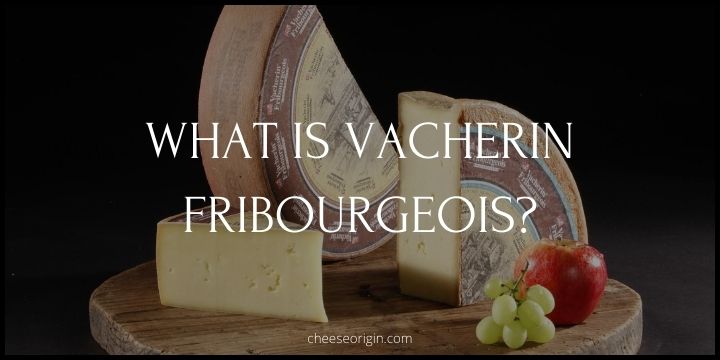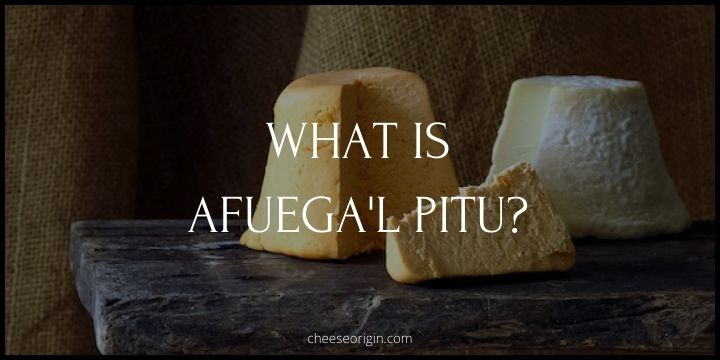What is Beaufort? The Nutty Delight from the French Alps

Nestled in the heart of the French Alps, a culinary gem ripens to perfection. This is Beaufort, a cheese as rich in history as it is in flavor.
Known for its distinct sweet and nutty taste, Beaufort is a testament to the art of traditional cheesemaking.
It’s a dairy delight that carries the essence of the alpine meadows within its creamy folds, telling a tale of meticulous craftsmanship and nature’s bounty.
In this post, we’re about to embark on a flavorful journey to discover the magic behind Beaufort, the nutty delight from the French Alps. So, sit back, relax, and prepare your palate for an adventure like no other.
Quick Facts About Beaufort
| Country of Origin | France |
| Region | Rhône-Alpes, Savoie |
| AOC | 1968 |
| Age | Minimum of 5 months; up to 18 months for Beaufort d’été (summer) and 12 months for Beaufort d’hiver (winter) |
| Classification | Firm, Semi-hard, Alpine-style cheese |
| Milk | Raw unpasteurized cow’s milk (from Tarine or Abondance) |
| Fat content | 34% |
| Weight and shape | 20 to 70 kg (44 lb to 154 lb 3 oz), Round |
| Size | Diameter 35 to 75 cm; Height 11 to 16 cm |
| Aroma | Aromatic, pungent |
| Flavor profile | Sweet and creamy with hints of grass, hay, and fruit |
| Taste | Rich, sweet, complex with hints of meadow flowers |
| Pairing | Pinot Noir, Walnuts, Champagne, Chardonnay, Riesling |
| Texture | Dense, smooth, and supple |
| Color | Pale-yellow, pale-gold |
What is Beaufort?
Beaufort is a prestigious type of cheese that originates from the mountainous Savoie region in the French Alps. It’s a hard, pressed cheese that must be made of Tarine or Abondance breeds of cow and can only be produced in an area covering around 450,000 hectares or around 1112 acres in the Rhône-Alpes Beaufortain, Tarentaise, Maurienne valleys, as well as parts of the Val d’Arly valley.
This cheese is the perfect example of how a man can work alongside Mother Nature in a harsh and rugged terrain to adapt to the rhythm and demands of the seasons.
Beaufort is renowned for its distinct, concave shape, which is a result of the unique pressing process that involves a beechwood hoop and cloth. This method gives Beaufort its trademark, rounded edges.
The flavor profile of Beaufort is complex, but it’s often described as being mildly sweet and buttery, with hints of fruits and meadows. It has a smooth and creamy texture that melts in your mouth, making it perfect for a range of dishes, from fondue to gratin.
Beaufort holds an ‘Appellation d’Origine Protégée’ (AOP) status, which means that every stage of its production, from the milking of the cows to the maturing of the cheese, is regulated to ensure its quality and authenticity.
The Three Different Kinds of Beaufort
- Beaufort d’été (Summer Beaufort): Made from June to October of every year with an approximate production of 52,000 wheels annually, the Beaufort d’été aka Summer Beaufort is a well-balanced cheese with the taste of herbs, wildflowers, and earthy flavor.
- Beaufort d’hiver (Winter Beaufort): Made when the cows are in the valley from November to May with an approximate production of 65,000 wheels annually. The curds are clear because the cows are fed solely on dried food such as hay.
- Beaufort Chalet d’alpage: The most uncommon and rarest Beaufort, Beaufort Chalet d’alpage is made 1,500 meters above sea level in the alpine chalets from a single herd of cows by only using traditional methods. The approximate annual production is less than 10,000 wheels.
What Does Beaufort Taste Like?

Beaufort is renowned for its rich and sophisticated flavor profile. The taste can vary slightly depending on the season it’s produced, but generally, Beaufort offers a balanced blend of flavors that reflect its alpine origin.
The cheese has a dominant sweet and nutty taste, with a slight hint of tanginess. It’s often described as having undertones of butter and cream, with a distinct note of fresh, grassy sweetness if the cheese is made during the summer months when the cows are grazing on the high mountain pastures.
The winter version, Beaufort d’hiver, is made from the milk of cows fed on hay, which results in a slightly different, more earthy flavor. Beaufort Chalet d’Alpage, made in chalets in the high mountains, is considered the most flavorful, boasting a robust, aromatic profile with a long finish.
The texture of Beaufort is equally appealing. It’s smooth and dense, yet also creamy, which makes it melt in your mouth. This combination of complex flavors and pleasing textures is part of what makes Beaufort such a beloved cheese, whether enjoyed alone, in a sandwich or melted in a traditional fondue.
Beaufort Tasting Notes
- Texture: Beaufort has a dense, yet creamy and smooth texture that melts in the mouth.
- Color: The cheese is typically pale yellow in color.
- Aroma: It has a fresh, milky aroma with hints of alpine flowers and grass.
- Taste: Beaufort offers a sweet and nutty taste, balanced with a slight tanginess.
- Flavor Profile: The flavor profile is complex, with undertones of butter and cream. It can also have notes of fresh, grassy sweetness, particularly if the cheese is made during the summer months when the cows graze on high mountain pastures.
- Finish: Beaufort has a long-lasting, pleasing aftertaste. The Chalet d’Alpage variety, made in high mountain chalets, is especially known for its robust, aromatic profile and prolonged finish.
- Pairing: Beaufort pairs well with white wines like Chardonnay or light-bodied red wines like Pinot Noir. It’s also great with fruits like apples and pears, or nuts for a savory contrast.
- Serving Suggestions: Beaufort can be enjoyed on its own, grated over dishes, melted in fondue, or sliced on a cheese platter. Its melting quality makes it a popular choice for baking and cooking.
- Seasonal Variations: The taste can vary slightly depending on the season. Beaufort d’été (summer) has a fresh, grassy sweetness, while Beaufort d’hiver (winter) has a slightly more earthy flavor due to the cows being fed on hay.
What Pairs Well With Beaufort?
Food that goes well with Beaufort:
| Food | Description |
|---|---|
| Low Country Boil | A traditional Southern dish, typically including shrimp, sausage, corn, and potatoes. Beaufort cheese can add a creamy, flavorful twist to this hearty meal. |
| Seafood Boil | Similar to a Low Country Boil, but with a variety of seafood. Adding chunks of Beaufort can enhance the richness of the dish. |
| Shrimp & Grits | This classic comfort food can benefit from the addition of Beaufort, which can be melted into the grits for a creamy texture and a sweet, nutty flavor. |
| Beaufort Stew (Frogmore Stew) | A traditional South Carolina dish that typically includes shrimp, sausage, corn, and potatoes. The stew can be elevated by adding pieces of Beaufort for a more complex flavor profile. |
| Chicken or Beef Dishes | While not traditionally paired with Beaufort, chicken or beef dishes could be enhanced by the cheese’s sweet and nutty flavor. It can be used in a sauce, melted over the top, or incorporated within the dish. |
Beverage that goes well with Beaufort:
| Beverage | Description |
|---|---|
| German Riesling | This white wine has a balanced acidity that can complement the sweet and nutty flavor of Beaufort cheese. |
| Californian Chardonnay | Another white wine, this one is full-bodied with a buttery taste that pairs well with the creamy texture of Beaufort. |
| Argentinian Malbec | A red wine option, Malbec offers a fruity and tannic contrast to the smooth and nutty Beaufort. |
| Burgundy Chablis | This French white wine from the Burgundy region pairs well with Beaufort, especially considering both are from neighboring regions in France. |
| Iced (Sweet) Tea | A non-alcoholic option, sweet tea can provide a refreshing contrast to the rich flavors of Beaufort. |
| Beer | Depending on the type, beer can either complement or contrast with the flavors of Beaufort, making it a versatile pairing option. |
| Rosé | A rosé, like Early Mountain Rosé, can pair perfectly with Beaufort, providing a balance between the cheese’s richness and the wine’s crispness. |
| Cocktails | Certain cocktails might pair well with Beaufort, especially those that can balance out its rich, creamy flavor. |
The History and Origin of Beaufort Cheese
Beaufort cheese, a unique product of the French alpine region, boasts a history and tradition that’s as rich and complex as its flavor. This firm, raw cow’s milk cheese belongs to the Gruyère family and is produced in the valleys of Beaufortain, Tarentaise, Maurienne, and Val d’Arly.
The history of Beaufort cheese takes us back to the Indo-Asian continent, where the ancient mountain breed of cows, known as Mahogany-colored Tarine or Tarentaise, originally came from. For generations, these cows have provided the raw milk for making Beaufort, contributing to its distinct taste and aroma.
One fascinating origin story tells of farmers who had to strap wheels of cheese tightly to their donkeys to transport it down the mountain. This practice resulted in the cheese’s unique concave shape, which is easily recognizable and has now become a signature trait of Beaufort.
Over time, Beaufort cheese has received significant recognition for its quality and heritage. On April 4, 1968, it received French recognition as an AOC (controlled designation of origin). Later, it also received the European PDO (protected designation of origin), further cementing its status as a cheese of exceptional quality and provenance.
Today, Beaufort cheese continues to be celebrated as one of the noble Alpine cheeses. It is available in two versions – Beaufort d’été (summer Beaufort) and Beaufort d’hiver (winter Beaufort), each with its own unique characteristics influenced by the season in which it is produced.
Where to Buy Beaufort Online:
- Fromages – 1 kg for €64.00
- Gouda Cheese Shop – 500 g for €15.95
- Gourmet Foodstore – 1 lb for $28.72
- La Fromagerie – 0.5 lb for $19.99
- Cheeseshop.sg – 250 g for S$22.50
More Cheeses from France:







